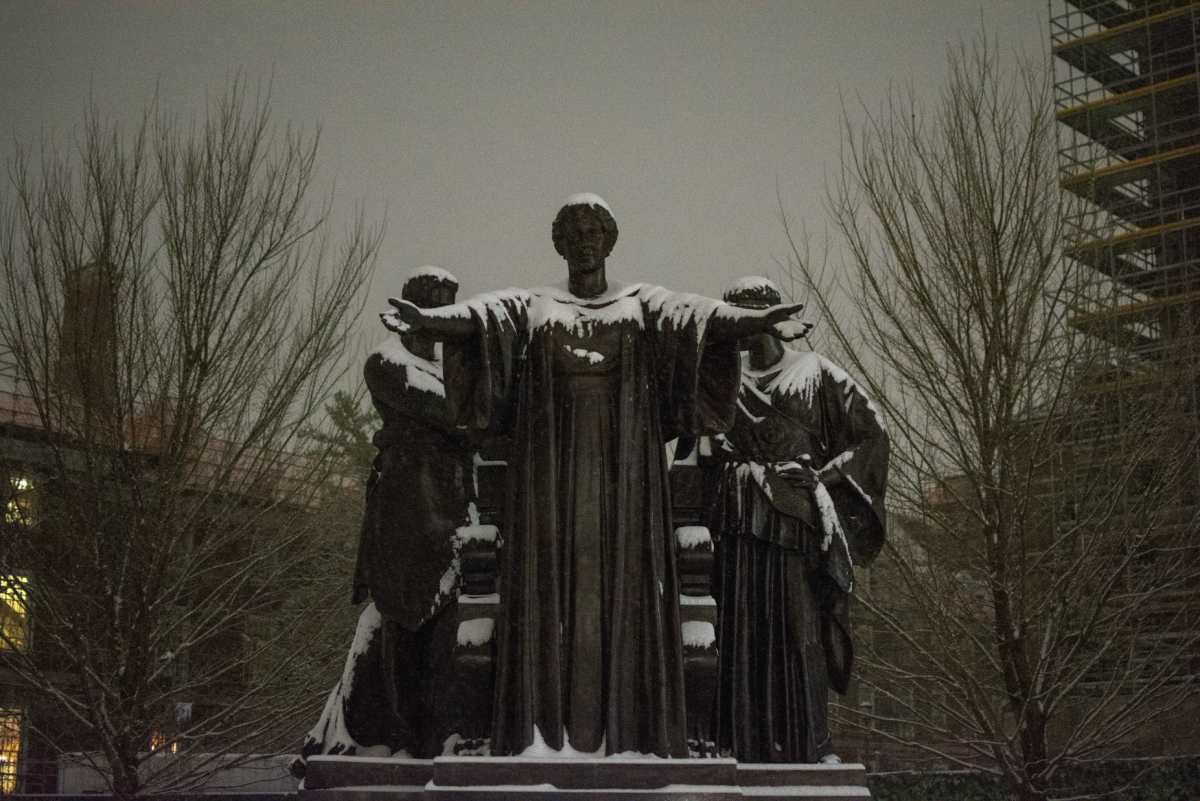With the release of the Office of Sustainability’s Illinois Climate Action Plan (iCAP) on May 15, the University pledged to take steps toward carbon neutrality, less energy use and overall improved sustainability in the future. Among these are projects that will not only help save the environment but some dollars as well.
As part of the University’s signing of the American College and University Presidents’ Climate Commitment in 2008, the plan calls for carbon neutrality by 2050, which refers to net zero carbon emissions. It also demands a reduction in building energy use of 40 percent by 2025, officials said in a press release.
One of the commitments outlined in the iCAP is the elimination of coal use at Abbott Power Plant by 2017. Amy Allen, president of Student for Environmental Concerns and former Illini Media employee, said a report revealed that continuing to burn coal at Abbott Power Plant would require millions in maintenance and renovations in order to remain operational and within compliance of the Clean Air Act.
A transition to more natural gas and less coal could save money, she said.
Tom Abram, sustainability coordinator for Facilities and Services, said in addition to energy reduction, the plan calls for a “significant increase in renewable energy usage.” In the iCAP, the University pledges to use renewable energy generation systems to supply at least 5 percent of its electrical needs by 2015 and 25 percent by 2025.
Get The Daily Illini in your inbox!
He said that several of the planned projects for renewable energy systems include the installation of a utility scale wind turbine and biomass pilot plant near the College of Veterinary Medicine by 2011. The plan also calls for two more wind turbines afterward, if feasible.
“We’ll also be looking at additional solar photovoltaic systems. We will explore biomass possibilities at the existing Abbott Power Plant and what modifications will need to occur to ramp it up in the coming years,” Abram said.
Officials said other projected goals include implementing a campus bicycling master plan and requiring that all new buildings and major renovations meet the Leadership in Energy and Environmental Design (LEED) Gold Standards by 2011.
Abram said that in the long term, the projects outlined in the plan have positive financial benefits.
“Our Retrocommissioning team, which drastically reduces energy consumption in campus buildings, has saved millions of dollars in the few years of their existence,” he said. “Although many of these projects have a significant first cost, there are funds available for these types of projects and creative financing can allow us to leverage these benefits from year one.”
Even though the University has committed to these goals, the plan is still not well known, Allen said.
“We’re (Students for Environmental Concerns) glad that the University set these strong goals,” Allen said. “We want to make sure that as many people are aware of it as possible to hold the University accountable to a fiscally, socially, and environmentally responsible future.”





